Chloe Clavel
InfoLM: A New Metric to Evaluate Summarization & Data2Text Generation
Dec 13, 2021
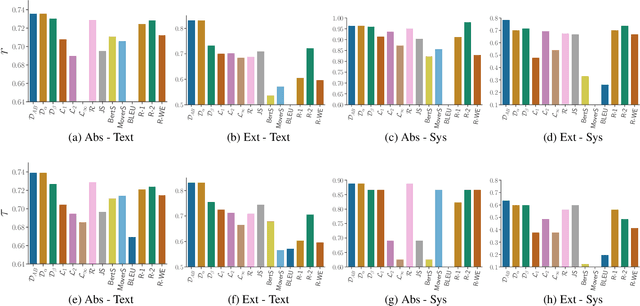
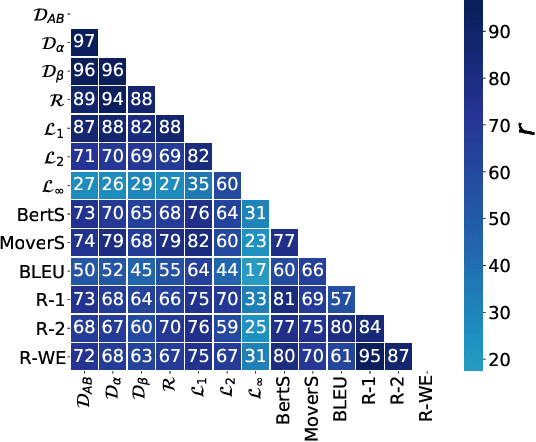
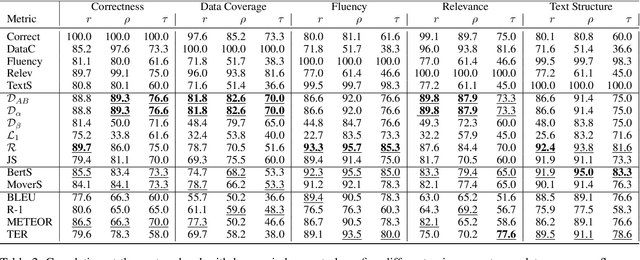
Abstract:Assessing the quality of natural language generation systems through human annotation is very expensive. Additionally, human annotation campaigns are time-consuming and include non-reusable human labour. In practice, researchers rely on automatic metrics as a proxy of quality. In the last decade, many string-based metrics (e.g., BLEU) have been introduced. However, such metrics usually rely on exact matches and thus, do not robustly handle synonyms. In this paper, we introduce InfoLM a family of untrained metrics that can be viewed as a string-based metric that addresses the aforementioned flaws thanks to a pre-trained masked language model. This family of metrics also makes use of information measures allowing the adaptation of InfoLM to various evaluation criteria. Using direct assessment, we demonstrate that InfoLM achieves statistically significant improvement and over $10$ points of correlation gains in many configurations on both summarization and data2text generation.
Improving Multimodal fusion via Mutual Dependency Maximisation
Sep 09, 2021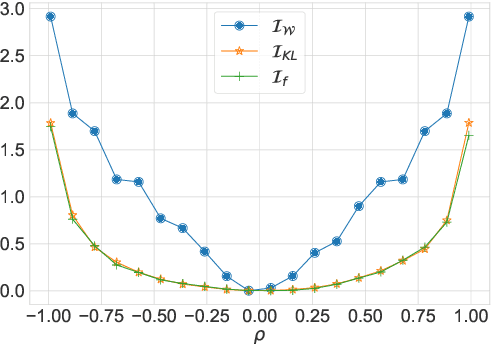
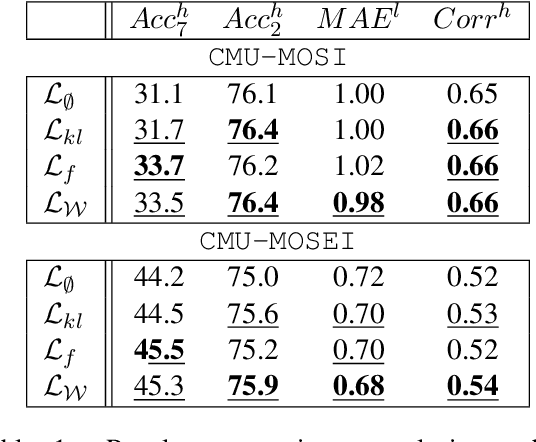
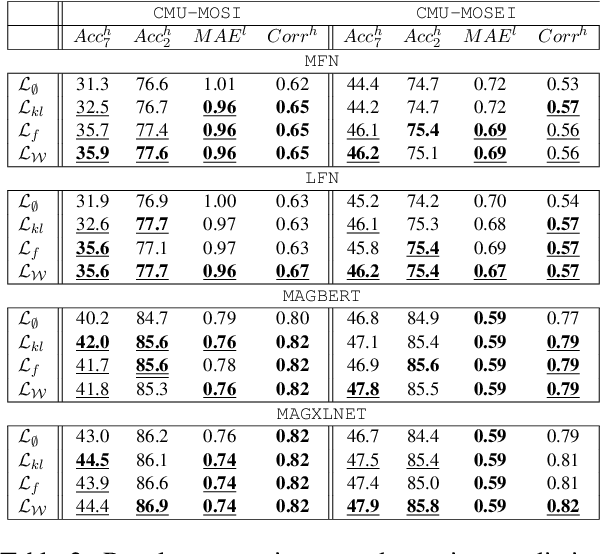
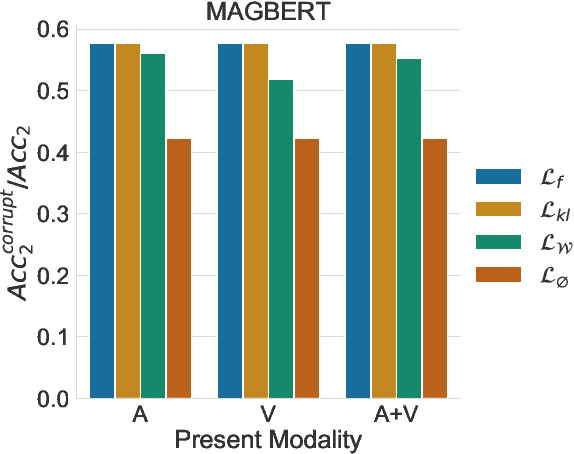
Abstract:Multimodal sentiment analysis is a trending area of research, and the multimodal fusion is one of its most active topic. Acknowledging humans communicate through a variety of channels (i.e visual, acoustic, linguistic), multimodal systems aim at integrating different unimodal representations into a synthetic one. So far, a consequent effort has been made on developing complex architectures allowing the fusion of these modalities. However, such systems are mainly trained by minimising simple losses such as $L_1$ or cross-entropy. In this work, we investigate unexplored penalties and propose a set of new objectives that measure the dependency between modalities. We demonstrate that our new penalties lead to a consistent improvement (up to $4.3$ on accuracy) across a large variety of state-of-the-art models on two well-known sentiment analysis datasets: \texttt{CMU-MOSI} and \texttt{CMU-MOSEI}. Our method not only achieves a new SOTA on both datasets but also produces representations that are more robust to modality drops. Finally, a by-product of our methods includes a statistical network which can be used to interpret the high dimensional representations learnt by the model.
Automatic Text Evaluation through the Lens of Wasserstein Barycenters
Sep 09, 2021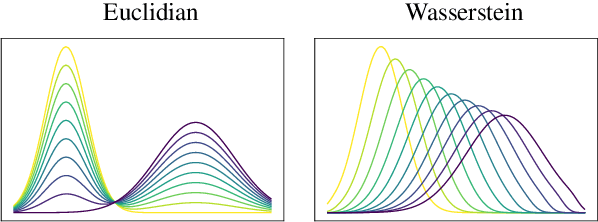
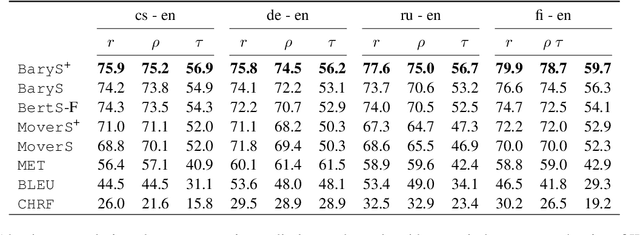
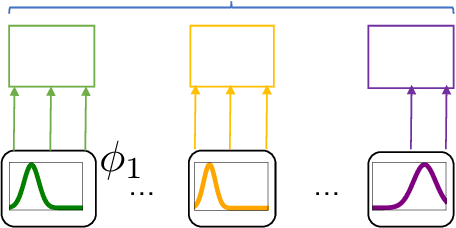

Abstract:A new metric \texttt{BaryScore} to evaluate text generation based on deep contextualized embeddings e.g., BERT, Roberta, ELMo) is introduced. This metric is motivated by a new framework relying on optimal transport tools, i.e., Wasserstein distance and barycenter. By modelling the layer output of deep contextualized embeddings as a probability distribution rather than by a vector embedding; this framework provides a natural way to aggregate the different outputs through the Wasserstein space topology. In addition, it provides theoretical grounds to our metric and offers an alternative to available solutions e.g., MoverScore and BertScore). Numerical evaluation is performed on four different tasks: machine translation, summarization, data2text generation and image captioning. Our results show that \texttt{BaryScore} outperforms other BERT based metrics and exhibits more consistent behaviour in particular for text summarization.
Code-switched inspired losses for generic spoken dialog representations
Sep 09, 2021

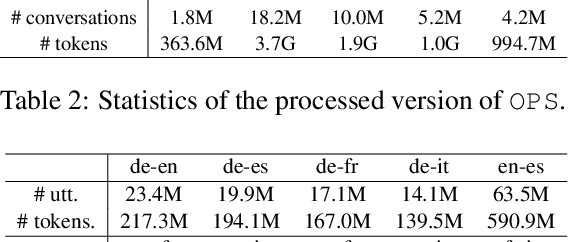
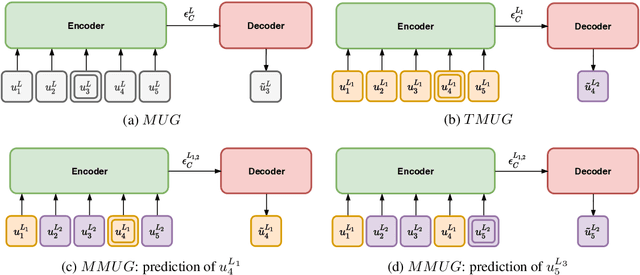
Abstract:Spoken dialog systems need to be able to handle both multiple languages and multilinguality inside a conversation (\textit{e.g} in case of code-switching). In this work, we introduce new pretraining losses tailored to learn multilingual spoken dialog representations. The goal of these losses is to expose the model to code-switched language. To scale up training, we automatically build a pretraining corpus composed of multilingual conversations in five different languages (French, Italian, English, German and Spanish) from \texttt{OpenSubtitles}, a huge multilingual corpus composed of 24.3G tokens. We test the generic representations on \texttt{MIAM}, a new benchmark composed of five dialog act corpora on the same aforementioned languages as well as on two novel multilingual downstream tasks (\textit{i.e} multilingual mask utterance retrieval and multilingual inconsistency identification). Our experiments show that our new code switched-inspired losses achieve a better performance in both monolingual and multilingual settings.
A Novel Estimator of Mutual Information for Learning to Disentangle Textual Representations
May 06, 2021
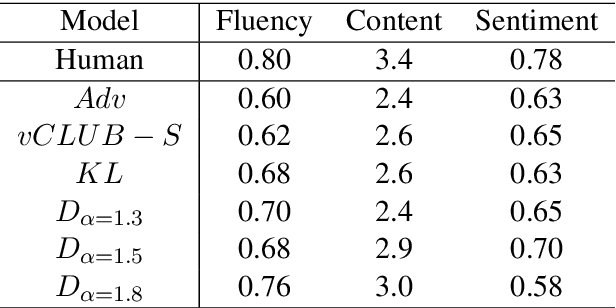

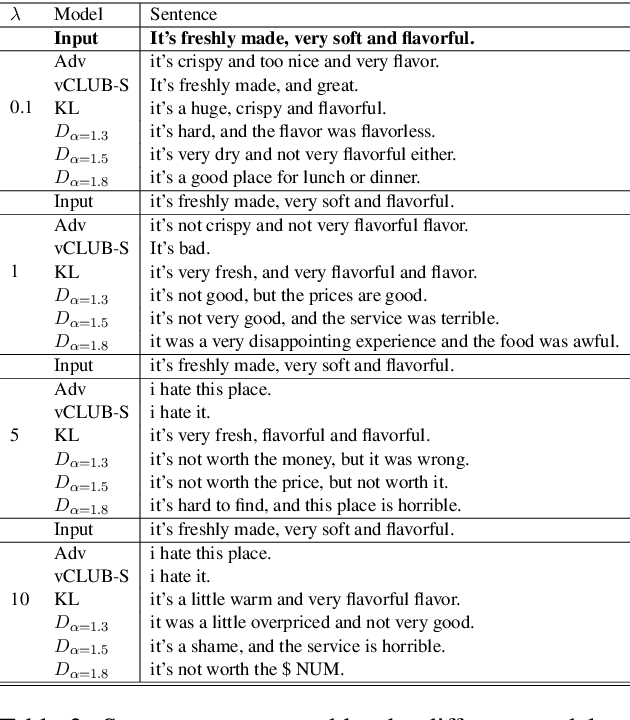
Abstract:Learning disentangled representations of textual data is essential for many natural language tasks such as fair classification, style transfer and sentence generation, among others. The existent dominant approaches in the context of text data {either rely} on training an adversary (discriminator) that aims at making attribute values difficult to be inferred from the latent code {or rely on minimising variational bounds of the mutual information between latent code and the value attribute}. {However, the available methods suffer of the impossibility to provide a fine-grained control of the degree (or force) of disentanglement.} {In contrast to} {adversarial methods}, which are remarkably simple, although the adversary seems to be performing perfectly well during the training phase, after it is completed a fair amount of information about the undesired attribute still remains. This paper introduces a novel variational upper bound to the mutual information between an attribute and the latent code of an encoder. Our bound aims at controlling the approximation error via the Renyi's divergence, leading to both better disentangled representations and in particular, a precise control of the desirable degree of disentanglement {than state-of-the-art methods proposed for textual data}. Furthermore, it does not suffer from the degeneracy of other losses in multi-class scenarios. We show the superiority of this method on fair classification and on textual style transfer tasks. Additionally, we provide new insights illustrating various trade-offs in style transfer when attempting to learn disentangled representations and quality of the generated sentence.
Hierarchical Pre-training for Sequence Labelling in Spoken Dialog
Oct 03, 2020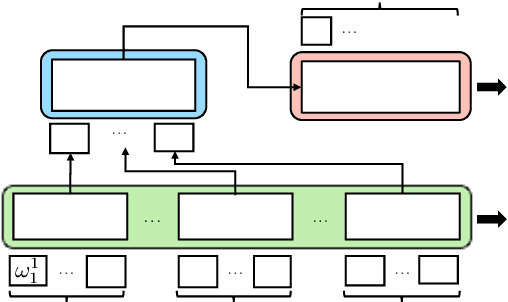
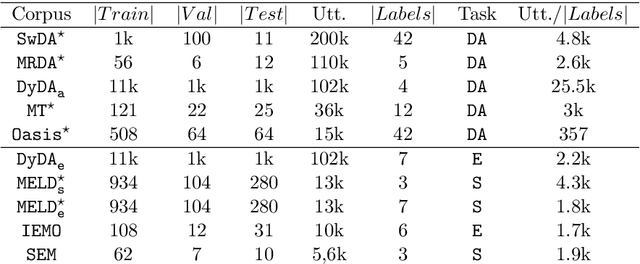
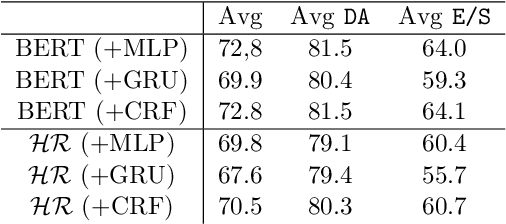
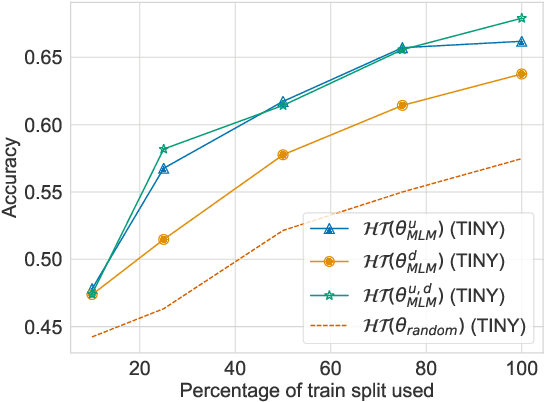
Abstract:Sequence labelling tasks like Dialog Act and Emotion/Sentiment identification are a key component of spoken dialog systems. In this work, we propose a new approach to learn generic representations adapted to spoken dialog, which we evaluate on a new benchmark we call Sequence labellIng evaLuatIon benChmark fOr spoken laNguagE benchmark (\texttt{SILICONE}). \texttt{SILICONE} is model-agnostic and contains 10 different datasets of various sizes. We obtain our representations with a hierarchical encoder based on transformer architectures, for which we extend two well-known pre-training objectives. Pre-training is performed on OpenSubtitles: a large corpus of spoken dialog containing over $2.3$ billion of tokens. We demonstrate how hierarchical encoders achieve competitive results with consistently fewer parameters compared to state-of-the-art models and we show their importance for both pre-training and fine-tuning.
Guider l'attention dans les modeles de sequence a sequence pour la prediction des actes de dialogue
Feb 26, 2020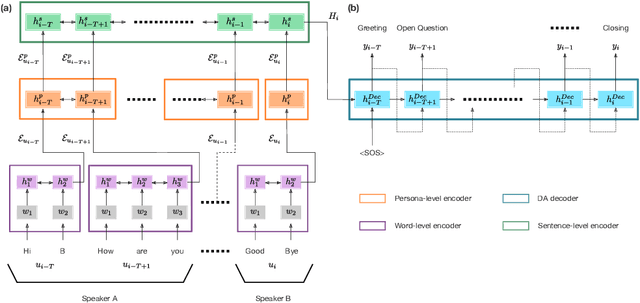
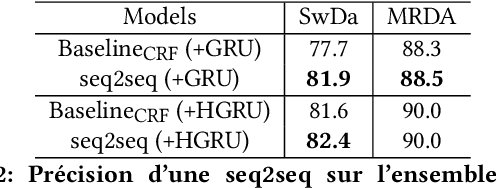

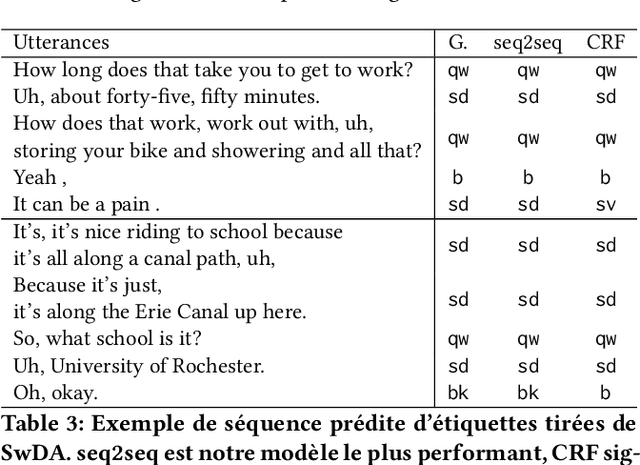
Abstract:The task of predicting dialog acts (DA) based on conversational dialog is a key component in the development of conversational agents. Accurately predicting DAs requires a precise modeling of both the conversation and the global tag dependencies. We leverage seq2seq approaches widely adopted in Neural Machine Translation (NMT) to improve the modelling of tag sequentiality. Seq2seq models are known to learn complex global dependencies while currently proposed approaches using linear conditional random fields (CRF) only model local tag dependencies. In this work, we introduce a seq2seq model tailored for DA classification using: a hierarchical encoder, a novel guided attention mechanism and beam search applied to both training and inference. Compared to the state of the art our model does not require handcrafted features and is trained end-to-end. Furthermore, the proposed approach achieves an unmatched accuracy score of 85% on SwDA, and state-of-the-art accuracy score of 91.6% on MRDA.
* in French
Guiding attention in Sequence-to-sequence models for Dialogue Act prediction
Feb 26, 2020
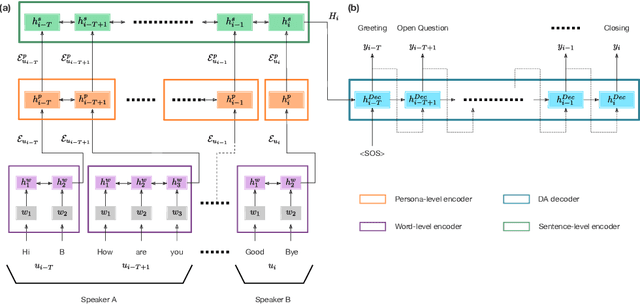
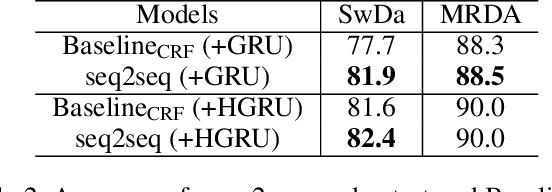

Abstract:The task of predicting dialog acts (DA) based on conversational dialog is a key component in the development of conversational agents. Accurately predicting DAs requires a precise modeling of both the conversation and the global tag dependencies. We leverage seq2seq approaches widely adopted in Neural Machine Translation (NMT) to improve the modelling of tag sequentiality. Seq2seq models are known to learn complex global dependencies while currently proposed approaches using linear conditional random fields (CRF) only model local tag dependencies. In this work, we introduce a seq2seq model tailored for DA classification using: a hierarchical encoder, a novel guided attention mechanism and beam search applied to both training and inference. Compared to the state of the art our model does not require handcrafted features and is trained end-to-end. Furthermore, the proposed approach achieves an unmatched accuracy score of 85% on SwDA, and state-of-the-art accuracy score of 91.6% on MRDA.
 Add to Chrome
Add to Chrome Add to Firefox
Add to Firefox Add to Edge
Add to Edge